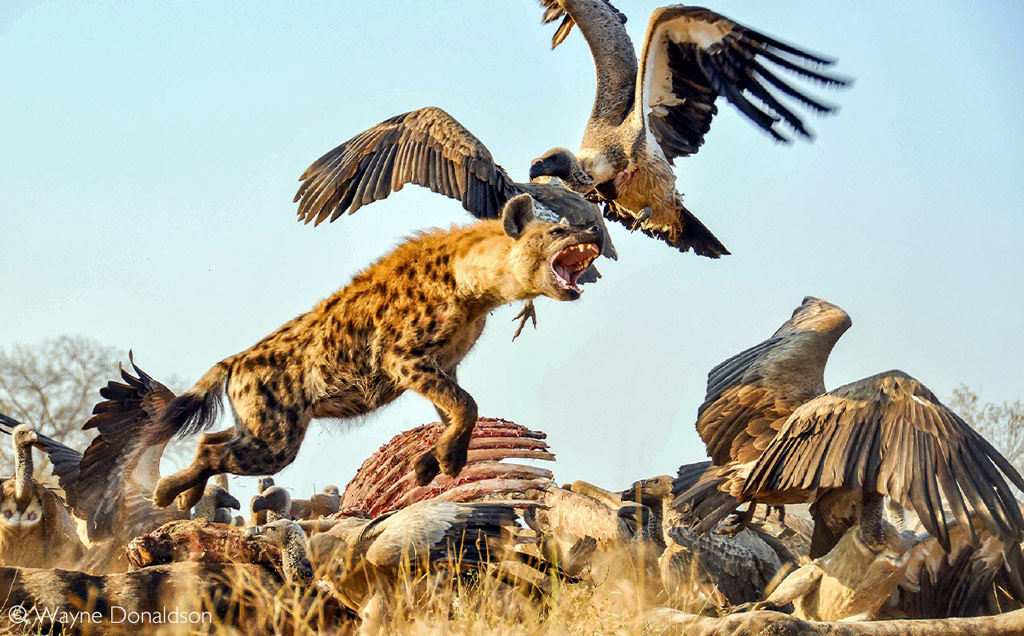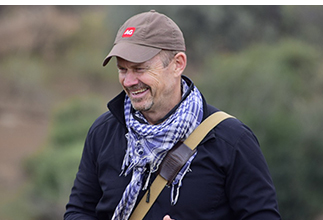
This is a copy of our weekly email newsletter. Subscribe here to receive the newsletter.
Kingsley Holgate in Nkhotakota + saving cranes

Last weekend, I attended a joyous event that renewed my faith in local conservation efforts. A particularly beneficial 2,364 hectares of privately owned land has been added to Timbavati in the Greater Kruger – consolidating the significant conservation success of this wonderful Big 5 private nature reserve that shares an unfenced border with Kruger National Park. We watched as Wiggill and de Vos family members cut the wire fence that has, since I can remember, prevented wildlife from accessing an extensive stretch of the Klaserie River. Research projects have commenced to measure the impact on biodiversity and large trees as elephants move in to utilise what was forbidden fruit.
Meanwhile, a short distance away at my home, the warthog boars have started lip-clacking, heralding the start of the rut. The loud metallic clacking goes on for hours as the tunnel-vision gents follow the sows, nose to tail. Unfortunately the rainy season has been disappointing; some bushwillow trees are already turning orange, and the sparse grass has withered to straw. Are we in for a harsh dry season ahead?

Simon Espley – CEO, Africa Geographic
From our Editor – Taryn van Jaarsveld

And now for more news worth celebrating: A bird thought to be lost to science has been rediscovered in the cloud forests of the Democratic Republic of Congo. Not just one, but 18 yellow-crested helmetshrikes reappeared in bright yellow helmeted glory, chattering away in the trees, to a herpetology team from the University of Texas – who were exploring the forests on the mountain of the Itombwe Massif. The helmetshrike, which has not been seen in two decades, is endemic to the western slopes of the Albertine Rift. And the cherry on top? The discovery provides further motivation to drive the protection of these tropical forests from mining and logging.
Below, read about Kingsley Holgate’s expedition to Nkhotakota Wildlife Reserve, and learn about the intricacies of crane conservation in South Africa’s wetlands.
Keep celebrating Africa

Story 1
https://africageographic.com/stories/a-rejuvenation-story-afrika-odyssey-expedition-to-nkhotakota/
EXPEDITION NKHOTAKOTA
Kingsley Holgate and his Afrika Odyssey Expedition team find a story of rejuvenation, abundance and hope in Malawi’s Nkhotakota Wildlife Reserve
Story 2
https://africageographic.com/stories/the-changing-face-of-wattled-cranes-conservation/
CRANE CONSERVATION
Wattled cranes rely on wetlands & grasslands for survival – linking them to human populations that depend on these ecosystems
 TRAVEL DESK:
TRAVEL DESK:
Southern Africa is calling. These safaris offer action-packed adventures to give you a real taste of Africa in some of its most popular destinations:

Photographer of the Year 2024
Have you entered our Photographer of the Year 2024 yet? Submit your photos showcasing the exceptional biodiversity of Africa – from its oceans and lakes to its forests, savannahs, and grasslands. Share your photos featuring Africa’s incredible wildlife, diverse cultures and breathtaking landscapes, and you may become a winner. Don’t forget to check out the awesome prizes on offer – an impactful conservation safari and personal sponsorship of a lion research collar for each of our three winners. We look forward to seeing your submissions!

 WATCH: Nkhotakota Wildlife Reserve is Malawi’s oldest and largest reserve – encompassing 1,800km² of wild and rugged terrain. It extends east from the edge of the escarpment of the Great Rift Valley to just short of the shoreline of Lake Malawi. It is the ideal playground for hikers, mountain bikers and wilderness-seekers. Nkhotakota is Africa at her most raw and beautiful, removed from the indignities of mass commercial tourism. (06:03) Click here to watch
WATCH: Nkhotakota Wildlife Reserve is Malawi’s oldest and largest reserve – encompassing 1,800km² of wild and rugged terrain. It extends east from the edge of the escarpment of the Great Rift Valley to just short of the shoreline of Lake Malawi. It is the ideal playground for hikers, mountain bikers and wilderness-seekers. Nkhotakota is Africa at her most raw and beautiful, removed from the indignities of mass commercial tourism. (06:03) Click here to watch
For more videos celebrating Africa, check out our videos here
To comment on this story: Login (or sign up) to our app here - it's a troll-free safe place 🙂.![]()






